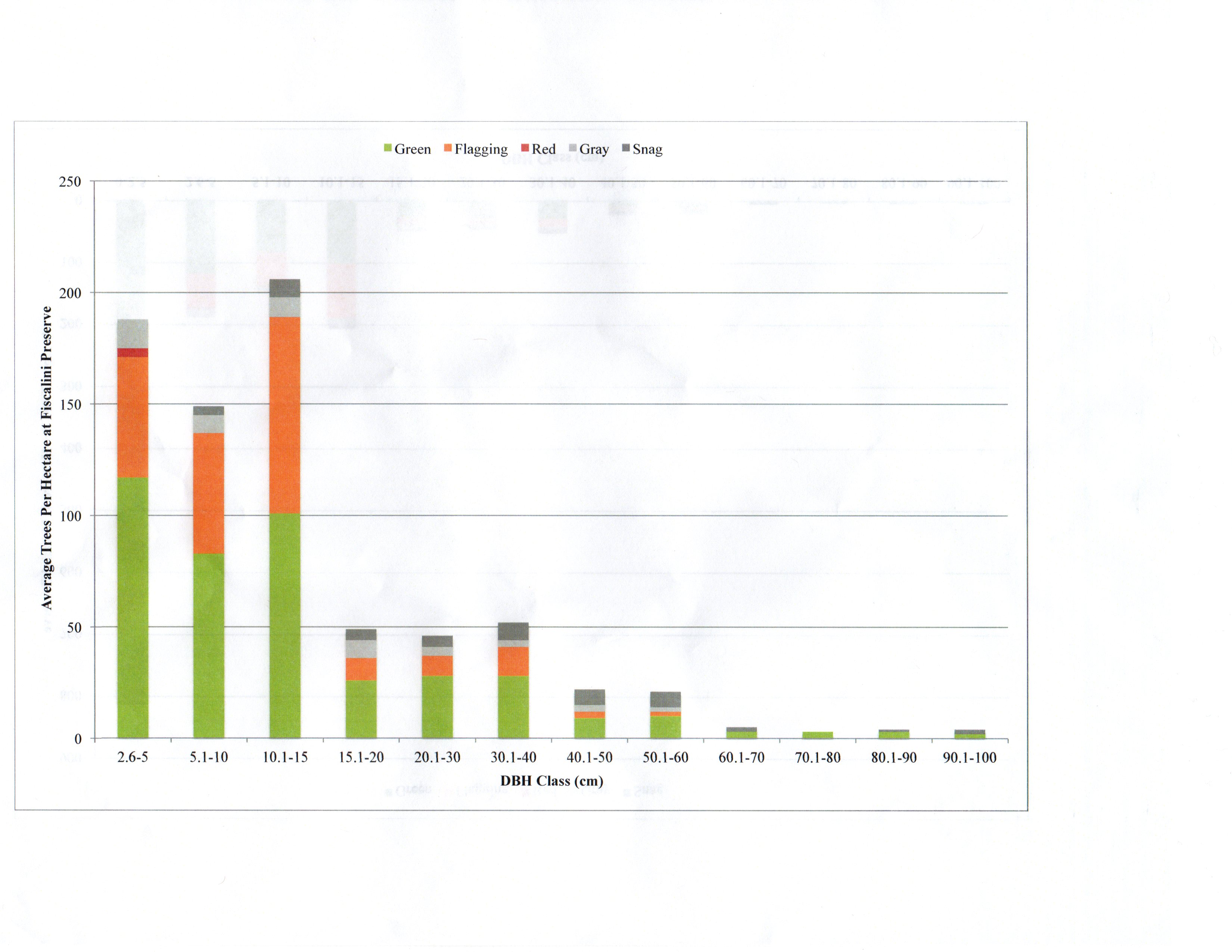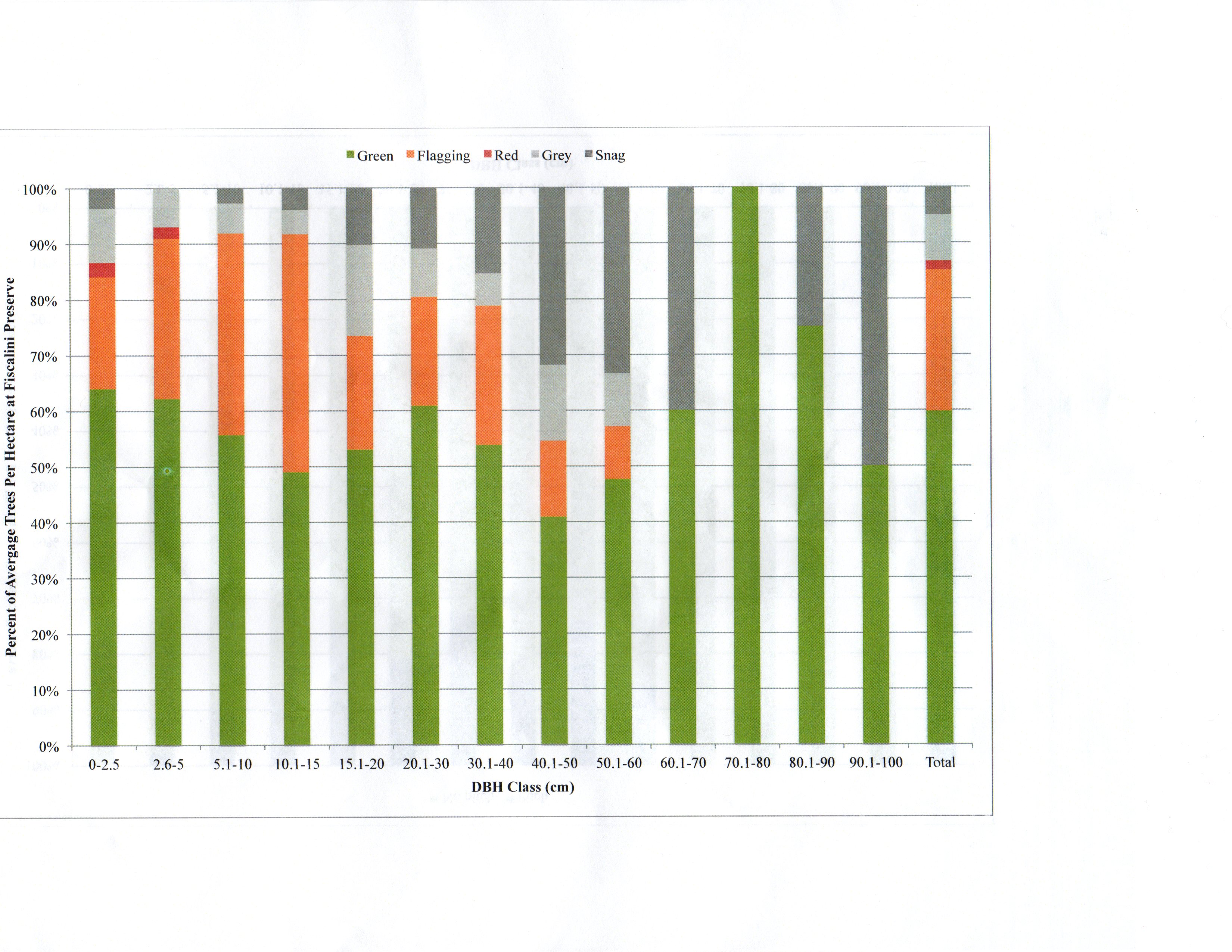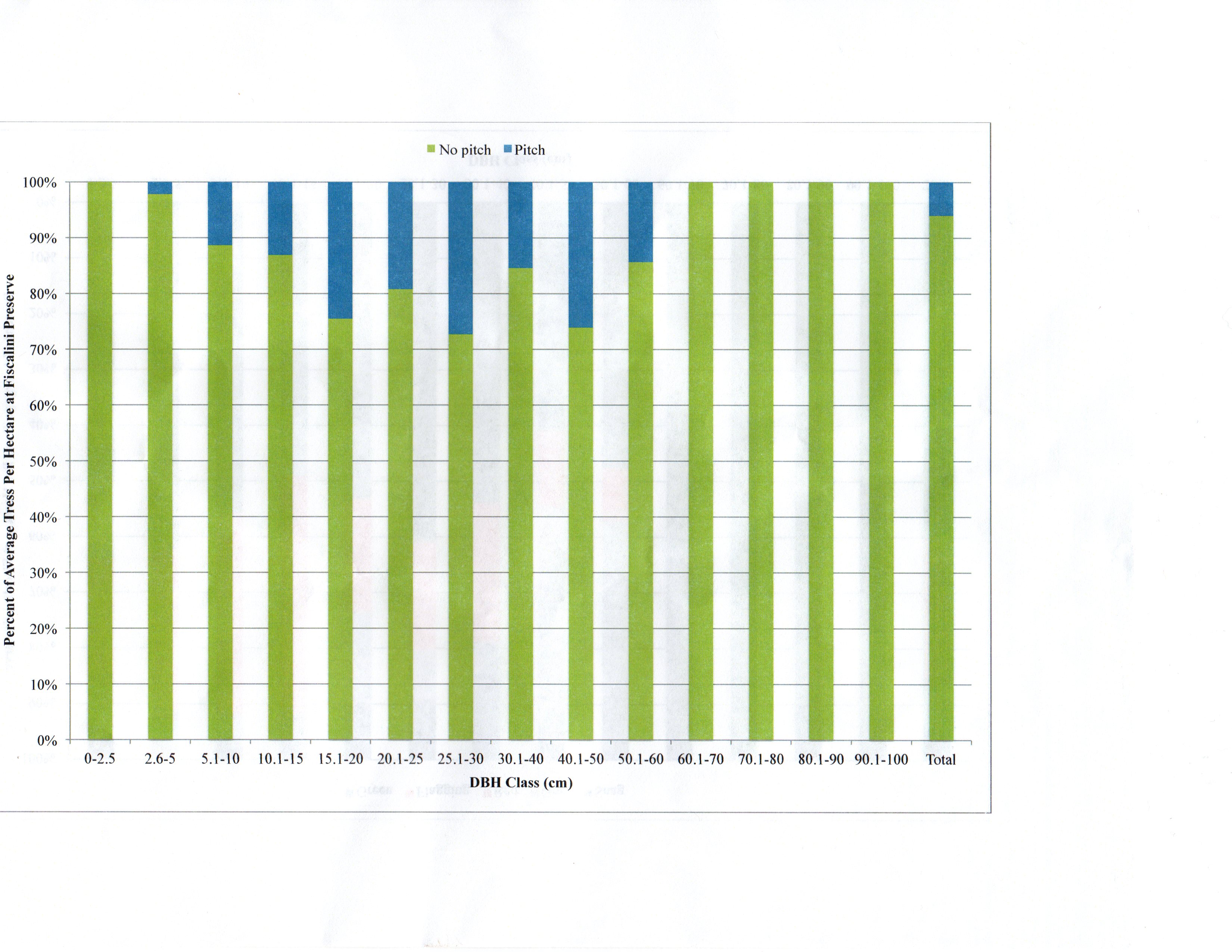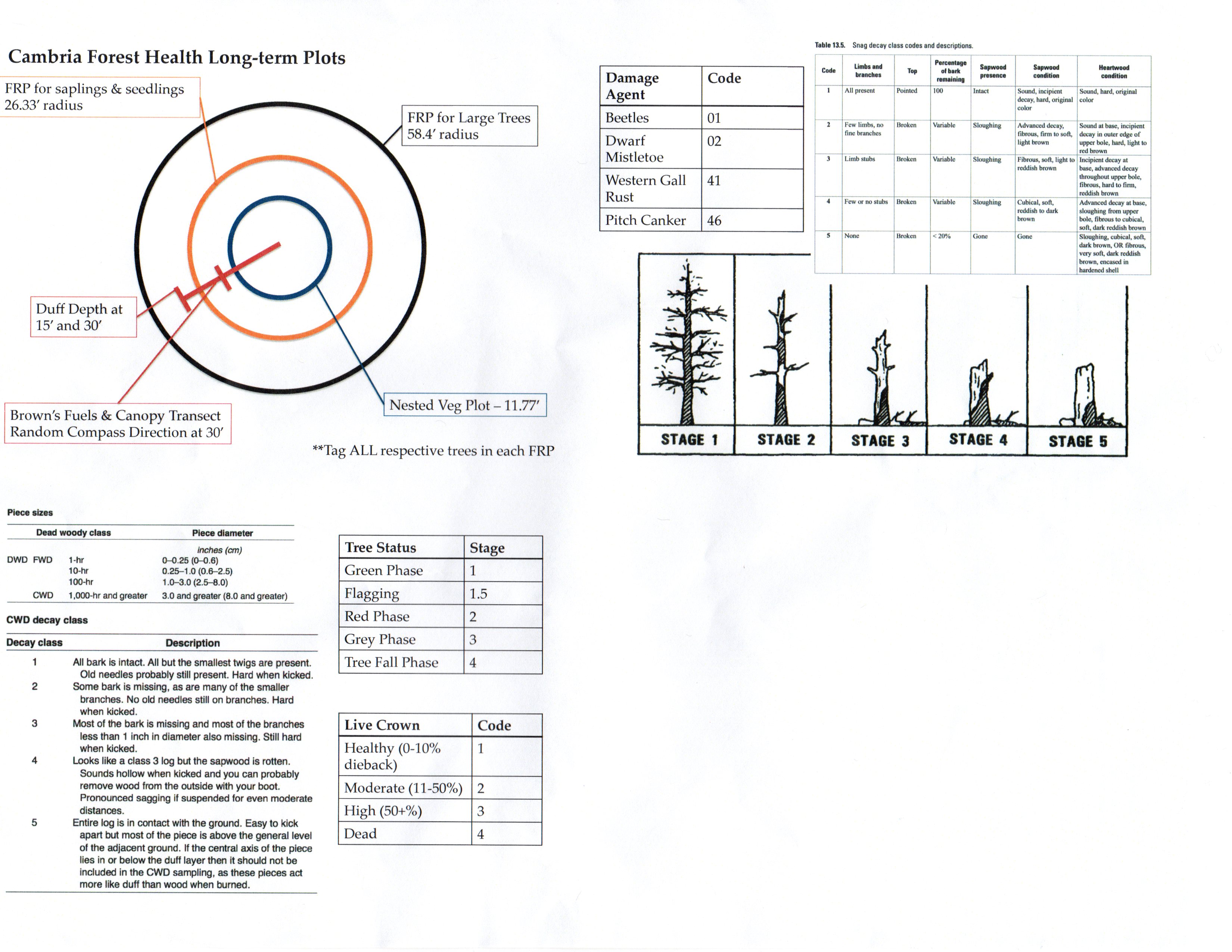Sarah Bisbing, Assistant Professor of Forest Ecology & Silviculture in the NRES Department at California Polytechnic State University in San Luis Obispo, is studying Cambria’s Monterey Pine Forest. She has students marking out plats that will be monitored over the years.
The Forest Committee thanks Dr. Bisbing for her presentation at the August 2016 meeting. See the PowerPoint of her presentation here, Bisbing presentation.
Dr. Bisbing directs her students in research across Cambria, evaluating the effects of the drought and disease on the forest. Her research can help guide policies to keep the forest healthy. A healthy forest is less likely to catch fire.
She and her students have set up a permanent plot network at Fiscalini Ranch Preserve, on Covell Ranch, and at Rancho Marino. They use a system to check on the trees and follow how the forest ecosystem changes over time. Recent research shows mature and senescent (old) trees dying, but new trees sprouting despite the drought.
Data compiled into graphs is posted on the Forest Committee’s web site. She explained her work in her talk. Please contact the Forest Committee, forest @ cambriaforestcommittee.org, if you have questions or would like more information.
Cambria has a Forest Management Plan, but the CSD has never funded it. The Grand Jury’s report Assessing Fire Risk in Cambria recommended that the CSD obtain funding to improve forest management.
“A key piece of successful forest management is in providing local communities with the information they need to make appropriate and ecologically-based decisions,” says a blog post from her Bisbing Forest Ecology and Silviculture Lab.
Cal Fire is removing dead trees from the forest to reduce the amount of fuel available for a fire, to protect the community.
“My dataset shows that there are multiple canopy layers of younger trees that can move into the upper canopy,” Dr. Bisbing said.
She has reported to the community on her findings:
Two charts showing the average number of trees per hectare in the Fiscalini Ranch Preserve and their condition. The charts show the same data, against different numbers, to be more sensitive in reflecting the forest condition.
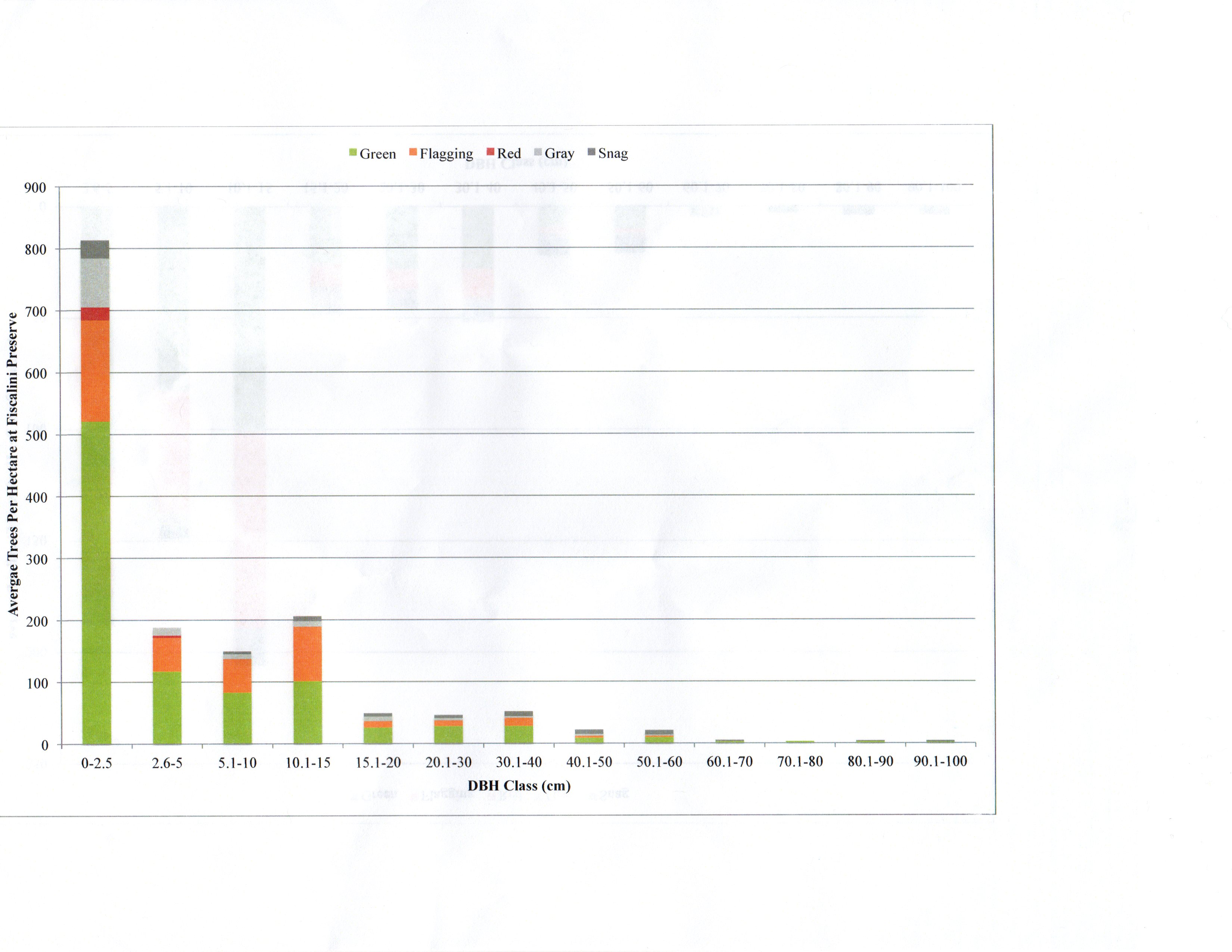 This chart shows many young trees starting to grow. The number of small trees overshadows the detail relevant to the larger trees. Many young trees are growing. Most will not survive, but they are doing well now. This is a natural process.
This chart shows many young trees starting to grow. The number of small trees overshadows the detail relevant to the larger trees. Many young trees are growing. Most will not survive, but they are doing well now. This is a natural process.
This chart show the same data, reflecting the more complex size and age of trees. Most of the trees with at least one orange branch are the young trees. Many of the young trees are doing well. Old trees are surviving. The amount of damage declines among older trees.
This chart shows the percentage of tree mortality by tree size. Trees with even a single orange branch were placed in the orange, Flagging, category. Her research will monitor how those trees survive. The small amount of trees in the Red category died within the past six months. This work can help us understand how quickly trees are moving toward mortality (dying).
This chart shows the percentage of trees on Fiscalini Ranch that show signs of pitch pine canker. The largest trees, over 60 cm in diameter, show none.
This page describes the techniques and protocols Dr. Bisbing and her students are using in collecting data about the forest.
They use it to guide their work in the field.
Upper left: shows the plot layout, as noted by the concentric circles at various radii. This allows them to create permanent plots in which all trees with a diameter of 5” or more at breast height within the Large Tree, 58.4” radius are tagged and identified by GPS. The nested plot within, with a 26.33” radius, any trees under five inches are tagged. Some plots have too many trees to evaluate. Brown’s Fuels & Canopy Transect allows this data to be used to calculate the amount of fuel in the plot.
Upper right: the codes students assign to various damage agents. Indigenous beetles are stressing trees, but not killing them. There’s some dwarf mistletoe on FRP, a lot on Covell, and little on Rancho Marino. It leads to defects in tree for lumber. It causes die-back on those branches.
Stages of snag and snag decay. The students tag Stages 1-3 and track Stages 4 and 5. Stage 5 trees may be gone in the following year.
Piece sizes: classified by amount of time it will burn. Rancho Marino has a lot of large trees, 1,000-hour trees. They burn longer but more slowly. Fire depends more on the distribution than the amount of fuel. Large dead trees on the ground will keep fire on the ground. Ladder fuels move fire up into the trees. That danger can be mitigated by removing ladder fuels and felling dead trees to keep fire on the ground.
CWD decay class: description is self-explanatory. It’s a way of tracking fuel.

